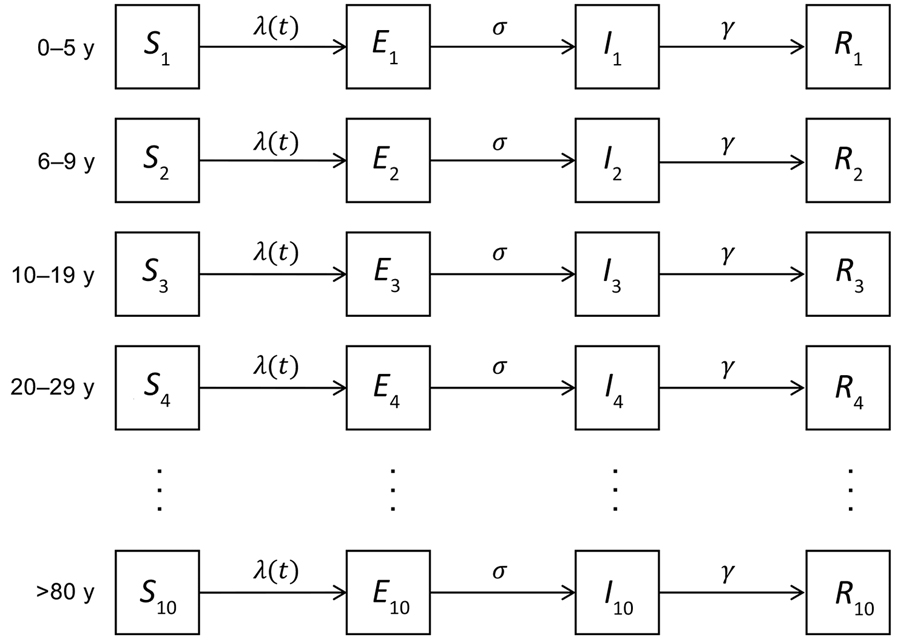Volume 26, Number 8—August 2020
Research
Evaluating the Effectiveness of Social Distancing Interventions to Delay or Flatten the Epidemic Curve of Coronavirus Disease
Figure 1

Figure 1. Mathematical model illustrating study population divided into 10 age groups and stratified as susceptible (S), exposed (E), infectious (I), and removed (R) from coronavirus disease epidemic. Susceptible persons become exposed at the force of infection λ(t), progress to become infectious at rate, σ, and are removed from infecting others at rate, γ.
Page created: June 05, 2020
Page updated: July 17, 2020
Page reviewed: July 17, 2020
The conclusions, findings, and opinions expressed by authors contributing to this journal do not necessarily reflect the official position of the U.S. Department of Health and Human Services, the Public Health Service, the Centers for Disease Control and Prevention, or the authors' affiliated institutions. Use of trade names is for identification only and does not imply endorsement by any of the groups named above.